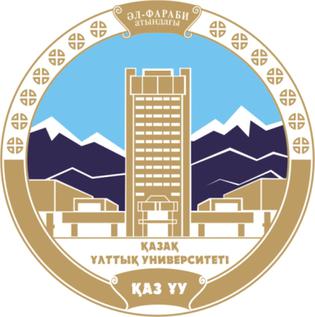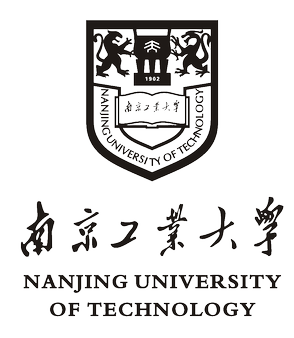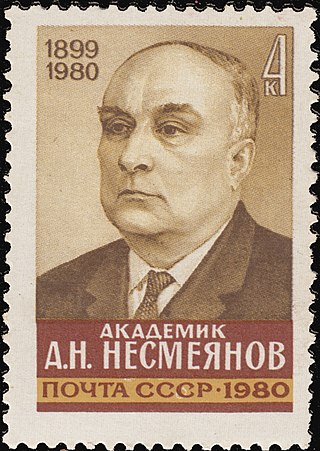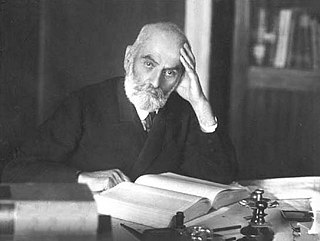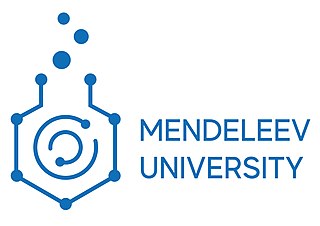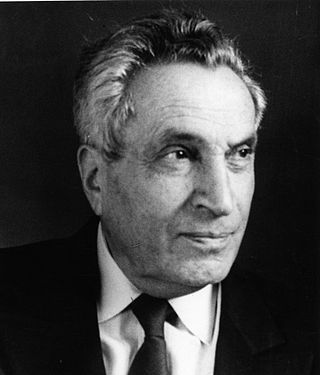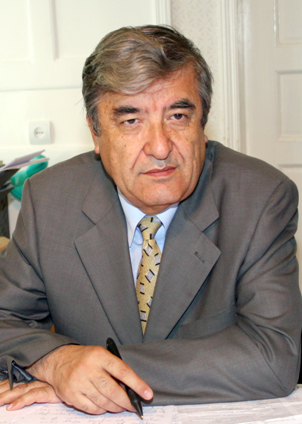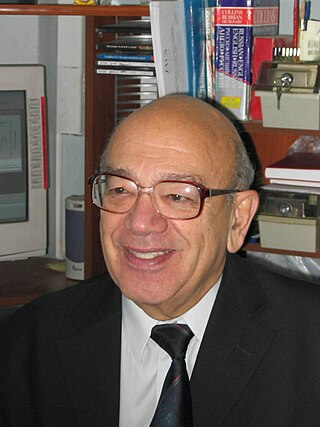History
History of the university and its continuing operations as a higher education institution begins 1 July 1900 and covers several stages.
Physics and Mathematics Faculty of Moscow Higher Women Courses (1900–1918)
1 July (14 July, New Style) 1900 was organized the Moscow Higher Women Courses (MHWC). Their structure originally consisted of two departments: History and Philosophy and Physics and Mathematics. On the last one were soon opened two offices: mathematical and natural, and after a few years two more – medical and chemical-pharmaceutical. The initiators and the first lecturers were outstanding scientists, academics subsequently S. A. Chaplygin, V. I. Vernadsky, N. D. Zelinsky (the inventor of the gas mask (1916)), Professors V. F. Davidov, B. K. Mlodzeevskii, A. N. Reformatsky, A. A. Eichenwald, S. G. Krapivin. The first director of MHWC was Professor V. I. Guerrier.
In 1905 as a director was elected S. A. Chaplygin, the leading scientist in the field of hydro- and aerodynamics, the organizer of the construction of school buildings on the Malaya Pirogovskaya street (formerly Devichie Pole). He remained in that post until 1918.
By the beginning of World War I MHWC turned into one of the largest higher education institutions in the country. The number of trainees reached 710, and during the existence of courses released 5760 professionals. In turning into a first-class university MHWC paramount importance had an exceptional organizational skill of S. A. Chaplygin, later shown to them with equal brilliance in creating TsAGI.
Department of Chemistry of the 2nd Moscow State University (1918–30)
16 October 1918 MHWC were converted into second Moscow State University. The first rector of the 2nd Moscow State University was appointed academician S. S. Nametkin who worked since 1913 as a head of the Department of Organic Chemistry of MHWC. As rector, he remained until 1924. As part of the 2nd Moscow State University became the chemical-pharmaceutical department, which in 1919 was transformed into the chemical and pharmaceutical department. At this time, on the faculty worked well-known Professors A. M. Berkengeim, B. K. Mlodzeevskii, S. S. Nametkin, M. I. Prozin, A. N. Reformatsky, O. N. Tsuberbiller. In 1929, the faculty became a chemical faculty of the university type with specialties such as:
- Chemical – pharmaceutical chemistry;
- Basic chemistry;
- Aniline chemistry;
- Chemistry of rare elements;
- Coke-benzene chemistry;
- Organic Synthesis.
Faculty graduates go to work in the factories, involve in the implementation of research projects that receive a wide scope. During 1922 – 1928 years it has been published about 300 papers and 11 monographs. The greatest successes are achieved in the fields of organic and pharmaceutical chemistry under the direction of heads of departments, academics S. S. Nametkin, B. M. Rodionov, Professor A. M. Berkengeim. Production of new drugs being introduced in the pharmaceutical factory belonging to faculty.
Moscow Institute of Fine Chemical Technology (1930–92)
18 April 1930 by order of the People's Commissariat second MSU was reorganized into three independent institutions: Medical (now RSMU them. Pirogov) Pedagogical (now MPSU), and Chemical Technology (now MITHT). Last transferred to the jurisdiction of the Vsehimprom VSNKh USSR. In addressing this issue directly involved Sergo Ordzhonikidze.
10 May 1931 Chemical and Pharmaceutical Faculty became an independent and received a new name – the Moscow Institute of Fine Chemical Technology (MITHT). Historically, the name of the institute is due to the nature of objects that are studied by students: they were small capacity chemical and pharmaceutical technology, technology of platinum group metals and rare-earth elements. From this moment begins a new stage of development of the institution, which is quickly becoming one of the leading universities in the chemical industry. Front of it set the goal of training for high-tech industries of chemical technology. In MITHT the first time in the country began to train engineers on the technology of thin inorganic products, synthetic rubber, thin organic produce synthetic liquid fuels, organometallic compounds and a number of other specialties.
In the process of restructuring of education at the institute have been preserved and developed the best traditions of MHWC and 2nd Moscow State University: a high level of theoretical training and a combination of academic and scientific work, helped by the fact that the teaching work at the institute and chairing of departments were performed by outstanding scientists and educators which created a school and research areas.
Special departments were prepared engineers for industries which were still being created in the first five years. At the time, were of great importance establishment of a domestic pharmaceutical industry and the country's liberation on imports of medicines. Were developed and implemented methods of production of such drugs as atophan, benzocaine, procaine, bromural, thiokol, ichtyol, validol, antipyrine, caffeine, alkaloids and others. In 1938, in MITHT under the leadership of academic A. N. Nesmeyanov (later President of the RAS) began work in the field of organometallic compounds. Also, the Institute prepared professionals for the companies producing such important national defense materials, such as tungsten, molybdenum, vanadium, and rare-earth elements. So, Professor I. Ya. Bashilov created the production technology of uranium and radium. And under the guidance of Professor G. A. Meyerson were carried out important work on carbothermy and getting super-hard alloys.
7 May 1940 for academic achievement and great progress in the preparation of chemists institute is named after the outstanding Russian scientist Mikhail Vasilievich Lomonosov.
During the war, groups of departments in collaboration with industry and research institutes conduct intensive research on defense-related development and implementation of the executed work. Thus, under the supervision of Professor N. I. Gelperin was created the most powerful bomb in World War II – FAB-5000NG that terrified Hitlerites. Efforts of the Institute as a whole and individual professors and teachers were appreciated by the country. Professors B. A. Dogadkin, N. I. Krasnopevtsev, V. V. Lebedinskij, S. S. Medvedev, S. I. Sklyarenko and Ya. K. Sirkin were awarded the Stalin Prize laureates, and associate professor K. A. Bolshakov won that title twice.
The post-war period was characterized by intensive work of the Institute staff in the aftermath of the war, the creation of the necessary conditions for teaching and research. Among the most important achievements of the postwar period MITHT need to include:
- The total synthesis of a number of natural alkaloids – pilocarpine, pilozinin, alkaloids of propane series (tropine, cocaine), arecoline, eserine, emetine, psyhotrine, emataliine, cinchonamine, tubocurarine and other alkaloids of curare (magnolin, magnolamine, dauricine). For this work, Professor N. A. Preobragensky in 1952 was awarded the Stalin Prize of the first degree;
- The synthesis of physiologically active derivatives of piperidine (anesthetics, analgesics, and other drugs), technology development and industrial development of high-output painkiller "promedol";
- Academician A. N. Bashkirov for the first time in the world and the Soviet Union in 1959 has been implemented industrial technology for production of higher aliphatic alcohols on the basis of a synthesis of hydrogen and carbon monoxide (the so-called "oxosynthesis technology");
- Development of technology for the production of vitamins A1, B1, B2, E, C and K1;
- Create rubbers based on new types of caoutchouc, operating at high and low temperatures in harsh operating conditions.
The high scientific – technical research conducted at the institute, evidenced by the fact that MITHT became one of the first places among the universities and research institutes on the number of implemented inventions. Employees of the institute published 450–500 scientific papers and received 50–60 invention certificates a year. The institute conducts research on economic agreements and contracts on cooperation with industry and research institutes, whose number exceeded 150.
MITHT, in fact, has turned into a complex of the university and research institutes. On 2500–3000 students, in addition to 400 professors and lecturers, employed more than 900 scientists. Two to one – that is the ratio of students, academic and teaching staff, which was reached in MITHT. Good specialist, engineer cannot be prepared without bringing him to participate in real, serious scientific research in the learning process.
11 February 1971 for his services to the training of specialists for the national economy and the development of scientific research institute was awarded the Order of the Red Banner of Labour.
Education in MITHT always featured a deep fundamental training, which included, along with a full range of natural sciences study the big cycle engineering and technological disciplines. Special training was carried out by the so-called "thin" chemical technologies that are, as a rule, small capacity technology, implemented on the basis of the latest achievements of chemical science and technology. That is, in fact, the students received a university degree in combination with engineering training.
Moscow State Academy of Fine Chemical Technology named after M. V. Lomonosov (1992–2011)
In 1992, the Moscow Institute of Fine Chemical Technology named after M. V. Lomonosov has received a new, higher educational status – status of the academy. With the name change has changed the status and range of activities of the institute along with old technology, new specialty Humanitarian – Management Profile: "Economics and Management (chemical industry)", "Environmental Protection", "Standardization and Certification". These specialties are subject to major technologies and solve their narrow-profile tasks.
Before the transition to a tiered structure the education of students was carried out in one direction, "Chemical Technology and Biotechnology", which consists of seven specialties. After the transition academy led training in seven areas of undergraduate, graduate five areas (including 26 master's programs) and 13 majors (including 25 majors) in full-time and part-correspondence courses, and conducted post-graduate education in 24 specialties and additional education in primary educational programs MITHT.
To implement in MITHT a tiered system of higher education were opened new training units. Along with main faculties teaching of students was performed at the Faculty of Natural Science, Faculty of Humanities, Faculty of Management, Economics and Environment, Faculty of Engineering, Faculty of further education at the Institute of Distance Education.
According to the Federal Agency for Supervision in Education and Science in 2008 in MITHT worked one of the most highly qualified scientific and technical teaching staff of universities and academies of Russia: doctors and candidates of sciences accounted for about 80% of the teachers. At the academy a total enrollment of 4,500 undergraduate and graduate students, taught 119 professors, doctors, and 218 associate professors, candidates of sciences.
Moscow State University of Fine Chemical Technologies (2011–present)
Panorama of MITHT main building on Vernadsky Prospect in Moscow
In 2011, the academy received a university status.
The successes of the university in education, research and innovation, the recognition of the scientific and pedagogical schools, its international status and worldwide fame are undoubtedly merit in the first professors, assistant professors, lecturers, and they have created in the walls of the university unique creative scientific and educational environment. Friendly and supportive atmosphere of the business and human interaction with the students and teachers together form the necessary conditions for the development of the individual, focused, motivated professional growth.





